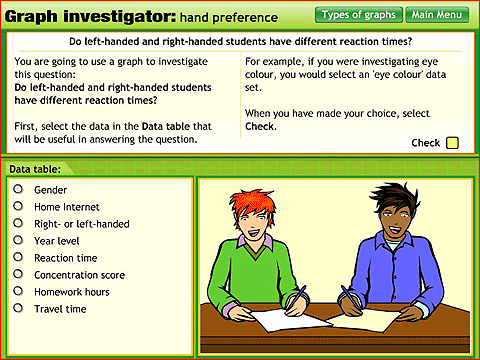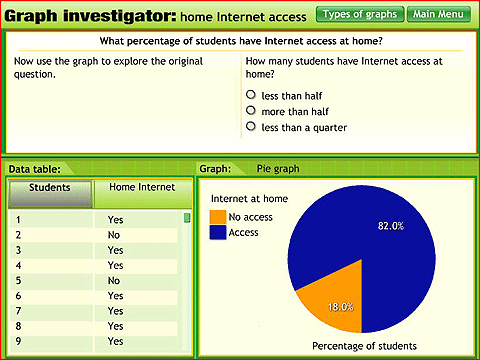Home > Statistics > Activities > Graph investigator
Graph investigator
The digital object L5903 Graph investigator explores different types of graphs. Students choose a question to investigate through data (e.g. Do left-handed people have a better reaction time?).
Students select an appropriate data set and choose a useful graph type for the context. They examine the data and draw a conclusion about the question being investigated, receiving immediate feedback on their choices.
The activity highlights the features of different graphical representations:
- scatter plots
- line, pie and column graphs
- histograms
- box-and-whisker plots
- single or back-to-back stem-and-leaf plots.
As students practise appropriate selection in the context of an investigation, the uses and advantages of various graph types are clearly explained in the text. The resource is suitable at year 10 to revise graph type features and fit-for-purpose selection. Individual learning objects (found in Related Items) can be used with years 6–9 as more graph types are encountered.
Students may refer back to this resource when choosing graph types for their own investigations.


